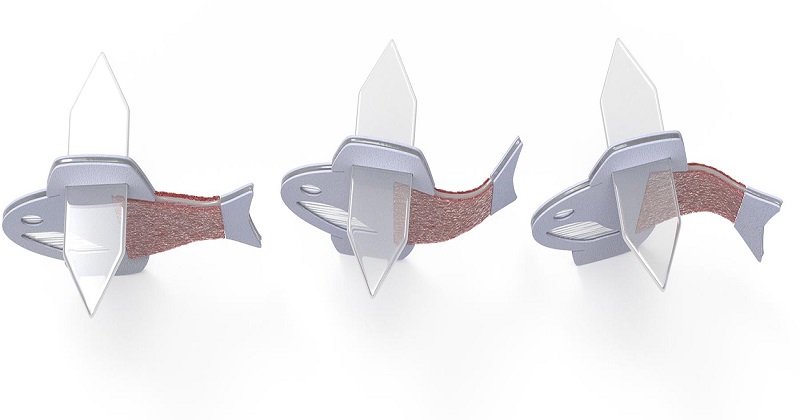
Harvard researchers have created the first completely autonomous biohybrid fish using human stem-cell-derived cardiac muscle cells to study heart ailments including arrhythmia. The ‘robot fish’ has two strips of human heart cells and swims by reproducing the muscular contractions of a beating heart, as shown in the image. This advancement has moved Harvard University specialists one step closer to building a more complicated artificial muscle pump.
The artificial fish includes human cardiac cells on either side of the tail fin and is inspired by the form and swimming motion of a zebrafish. According to the experts, when one side of the fin contracts, the other expands, driving the fish forward and giving it the appearance of swimming.
Harvard professor and senior author Kit Parker of the paper published in the journal Science said, ‘Our ultimate goal is to build an artificial heart to replace a malformed heart in a child’.
Parker further added that up until now, the majority of their research has concentrated on recreating the fundamental pounding of the heart in artificial tissues. ‘But here, we are drawing design inspiration from the biophysics of the heart, which is harder to do. Now, rather than using heart imaging as a blueprint, we are identifying the key biophysical principles that make the heart work, using them as design criteria, and replicating them in a system, a living, swimming fish, where it is much easier to see if we are successful’, he said.
Also Read: Vibhu Raghave diagnosed with stage 4 cancer, says ‘Life changed upside down in a day’

Parker’s Disease Biophysics Group previously built a jellyfish-like biohybrid pump out of rat cardiac muscle cells in 2012 and an artificial stingray out of rat cardiac muscle cells in 2016. Furthermore, as the scientists created an independent pacing node, similar to a pacemaker, the fish may control the frequency and rhythm of these spontaneous contractions. The researchers observed that the muscular contraction amplitude, maximum swimming speed, and muscle coordination increased for the first month as the cardiomyocyte cells grew, indicating that the biohybrid fish improves with age.

Post Your Comments